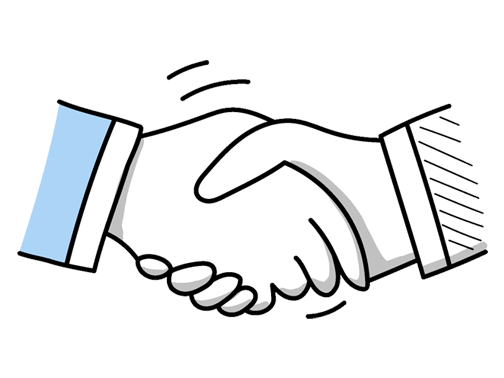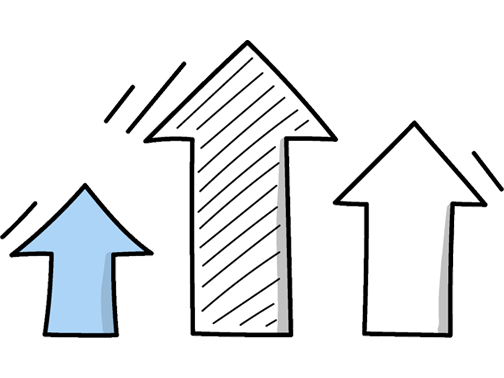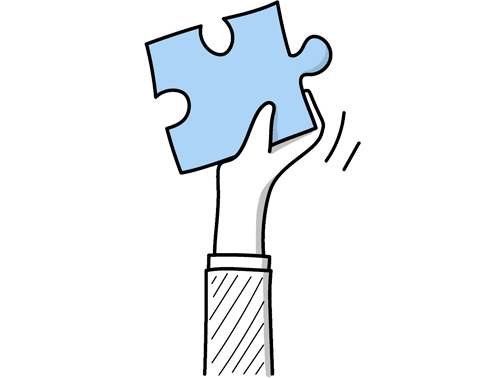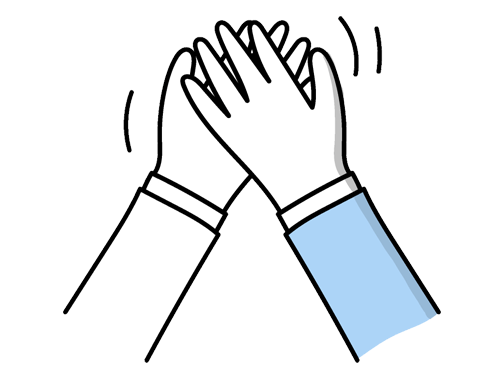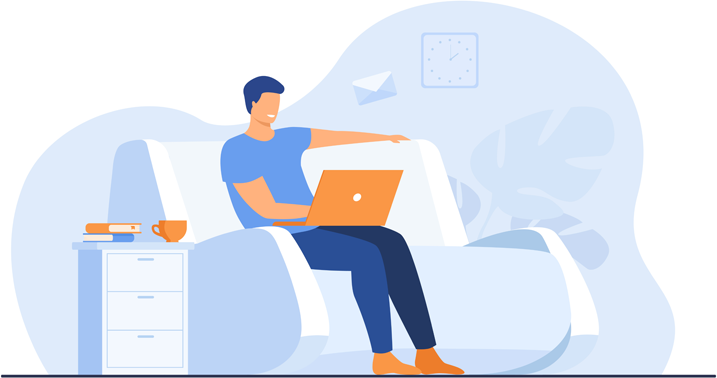Illustration Artist Interview Questions (2025 Guide)
Find out common Illustration Artist questions, how to answer, and tips for your next job interview
Practice Interviews Online - Identify your strengths and weakness in a realistic Illustration Artist mock interview, under 10 minutes
Practice Now »Illustration Artist Interview Questions
This interview question assesses your problem-solving skills and resilience when facing difficult tasks. You need to clearly describe a specific challenging project, explain the obstacles you faced, and highlight the creative or technical solutions you used to successfully complete it.
Example: One of the toughest projects was creating a detailed children’s book illustration under a tight deadline. Balancing intricate designs with simple storytelling was tricky. I broke the work into smaller parts, focusing on key scenes first, which helped manage time and maintain quality. Collaborating closely with the author also ensured the visuals matched the narrative tone, making the final piece both engaging and on schedule.
Questions like this help the interviewer understand how you organize your creative process and collaborate with clients. You should explain that you start by researching the client's brand and audience, then brainstorm and sketch multiple ideas, and finally refine your work by incorporating feedback to meet the project goals.
Example: When starting a new project, I like to get a clear picture of what the client wants and the story they want to tell. I usually sketch out a few quick ideas to explore different directions before settling on one. Throughout the process, I welcome feedback and tweak the artwork to make sure it fits the vision perfectly. For example, on a recent book cover, a few adjustments really helped capture the right mood.
Employers ask this question to understand how you stay creative and overcome challenges in your work. You need to explain that you explore diverse sources like art history, trends, and nature to find inspiration, then develop ideas through sketching and experimenting, while remaining flexible to adapt based on feedback.
Example: I like to draw inspiration from a mix of places—nature, everyday life, even old books or music. Once I have a concept, I sketch freely and experiment with different styles or colours to see what feels right. I also welcome feedback early on, which often leads me to rethink or improve ideas. Adapting along the way keeps my work fresh and ensures it resonates well with the brief or audience.
This question helps interviewers understand how you organize your work and handle challenges creatively. You need to clearly outline your step-by-step process from idea generation to final illustration, mentioning how you research, adapt to feedback, and use your tools effectively.
Example: Sure! I usually start by gathering inspiration and sketching rough concepts to explore different ideas. Once I settle on a direction, I refine the composition and focus on details, often revisiting earlier steps if something isn’t working. I use both traditional sketches and digital tools like Procreate or Photoshop to add color and texture. For example, when illustrating a recent book cover, adjusting the color palette mid-way really helped capture the mood more effectively.
This interview question helps the interviewer understand your unique artistic style and how you communicate your creative choices. You need to clearly describe the piece, highlight what makes it representative of your style, and explain the ideas or techniques that make it stand out.
Example: Sure! Here’s a natural, polished response you could use:
One piece that really reflects my style is a recent editorial illustration I did, where I combined clean lines with vibrant colours to convey emotion subtly. I like work that tells a story without overwhelming detail—think of how simple shapes can evoke strong feelings. It captures my approach: balancing clarity with expressive elements to connect with viewers on a personal level.
This question assesses your ability to understand and integrate the project's or brand's vision into your work, which is crucial for creating cohesive and effective illustrations. You need to explain how you actively communicate with clients or team members to grasp their goals, share your work regularly for feedback, and clearly articulate how your design choices support the brand’s message.
Example: I start by really getting to know the project’s goals and the brand’s personality, often by having detailed conversations with the team. Throughout the process, I regularly share sketches and ideas to make sure we’re on the same page. For example, when working on a recent campaign, checking in early helped me capture the right tone, avoiding major changes later and keeping everything consistent.
Hiring managers ask this to see how you manage time and stay organized under pressure. You need to say that you assess deadlines and project impact, then focus on urgent and important tasks first while communicating clearly with your team.
Example: When managing several projects on tight deadlines, I start by breaking down each task and assessing their urgency and impact. I focus on what moves the project forward most effectively, often tackling the trickiest parts early. For example, in a recent campaign, prioritizing key illustrations first helped keep the whole team on track and reduced last-minute stress. Staying organized and flexible makes all the difference.
What they want to understand is how you stay flexible and problem-solve under pressure without compromising your creative vision. You need to say that you assess the change quickly, communicate clearly with the team or client, and adapt your approach while keeping the project goals in focus.
Example: When unexpected changes pop up, I take a step back to understand the new direction and adjust my approach accordingly. For example, once a client shifted their brief midway, I revisited my sketches and communicated openly to align expectations. Staying flexible and maintaining clear communication helps me turn challenges into opportunities, ensuring the project stays on track without losing its creative spark.
Interviewers ask this question to see how well you communicate, collaborate, and manage responsibilities within a team setting. In your answer, clearly describe how you shared ideas, adapted to feedback, and coordinated tasks to meet deadlines successfully.
Example: In a recent project, I worked closely with designers and writers to create a series of illustrations for a magazine. We held regular check-ins to align on style and deadlines, which helped us stay on track. I adapted my approach based on the feedback and ensured my deliverables supported the overall vision. It was rewarding to see how clear communication and flexibility contributed to a smooth and successful collaboration.
Employers ask this to see if you can adapt your work for different uses and ensure high quality across platforms. You should explain how you adjust DPI for print versus screen, use vector graphics to maintain quality at any size, and tailor your illustrations to fit the needs of the target audience and platform.
Example: When working on illustrations, I always consider where they’ll be displayed—whether on a website, print, or social media. I use software like Adobe Illustrator and Photoshop to adjust resolution and format, balancing quality with file size. For example, I create vector files for scalability and export optimized PNGs or JPGs depending on the platform. Understanding the audience helps me tailor the style and clarity to ensure the best viewing experience.
Interviewers ask this to see how you handle challenges and use creativity under pressure. You need to explain the problem briefly, describe your unique solution, and highlight the positive outcome.
Example: In one project, I was asked to create an illustration that felt both modern and nostalgic, which was tricky. To solve this, I blended digital techniques with traditional sketching, layering hand-drawn textures over clean digital lines. This mix gave the artwork a unique depth that resonated with the client and audience, showing how combining different methods can lead to unexpected, effective results.
This interview question aims to assess your technical skills and versatility with illustration tools. You need to clearly state your proficiency with key software like Adobe Illustrator, explain how you use specific features to improve your work, and show your ability to adapt to new tools quickly.
Example: I primarily work with Adobe Illustrator and Procreate, as they offer great flexibility for both detailed vector work and freehand sketches. I like to combine these tools to bring ideas to life efficiently. That said, I’m comfortable exploring other software like Photoshop or Affinity Designer when projects call for it, as each platform has unique strengths that can enhance the creative process.
This question helps the interviewer understand your problem-solving skills and your familiarity with illustration tools. In your answer, explain that you first identify the issue by isolating the problem, then research solutions or consult resources, and finally apply fixes while testing each step.
Example: When technical issues arise, I stay calm and first identify whether it’s a software glitch or a user error. I usually check for updates or restart the program to reset things. If that doesn’t work, I look for solutions online or consult forums where other artists share tips. Once, a crashing issue was fixed simply by clearing cache—small steps often solve big problems.
Interviewers ask this to see how flexible and attentive you are to client needs and project goals. Describe how you clarified the requirements, the specific changes you made to your style, and the positive results that followed.
Example: Once, I worked on a children’s book where the publisher wanted a softer, more whimsical look than my usual bold, graphic style. After discussing their vision, I softened my lines and used pastel colours to create a gentle feel. The change was well-received, and the book’s success helped expand my range, showing how being flexible can lead to unexpected opportunities.
Interviewers ask this to see if you can accept and grow from feedback, which is crucial in collaborative creative work. You should say that you listen carefully without interrupting, ask clarifying questions to fully understand the feedback, and make thoughtful revisions that balance client needs with your artistic vision.
Example: I see feedback as a valuable part of the creative process. When a client or colleague offers input, I listen carefully to understand their perspective. I then reflect on how to incorporate their suggestions to enhance the work. If something isn’t clear, I ask questions respectfully to ensure we’re on the same page. For example, in a recent project, a client’s notes helped me refine the colour palette, making the final piece stronger.
What they want to understand is how you stay productive and resourceful when facing obstacles. You should say that you take breaks to refresh your mind and seek inspiration from different sources, then try new techniques to overcome the block.
Example: When I hit a creative block, I usually step back and change my environment—sometimes a walk or sketching something unrelated helps reset my mind. I find that giving myself space to experiment without pressure often leads to fresh ideas. For example, during a tight deadline, I once switched from digital to traditional media briefly, which sparked new inspiration and helped me move forward.
This question aims to see how you stay organized and handle pressure when juggling tasks. You need to say that you prioritize projects based on deadlines and complexity while using tools like calendars or to-do lists to track progress efficiently.
Example: I prioritise tasks by deadlines and project size, breaking work into manageable chunks. I keep a clear schedule and stay flexible if priorities shift. For example, when juggling two book covers, I set mini-deadlines to review sketches early, ensuring enough time for feedback without last-minute rushes. Keeping communication open with clients also helps me stay aligned and adapt smoothly.
Questions like this assess your ability to listen, adapt, and collaborate while maintaining your artistic vision. You need to explain that you carefully consider feedback, evaluate how it aligns with the project goals, and then thoughtfully adjust your work without compromising your style.
Example: When I receive feedback, I take a moment to understand the perspective and the intention behind it. I then review my work with fresh eyes, considering how the suggestions can enhance the overall message or visual impact. For example, once a client mentioned my colours felt a bit flat, so I experimented with layering and contrast, which really brought the piece to life while keeping my original style intact.
Hiring managers ask this question to see how well you work with others and contribute to a team. In your answer, explain the project, highlight your role, and describe how you communicated and coordinated with team members to achieve a unified final piece.
Example: One project I enjoyed involved working with a graphic designer to create an illustrated children’s book. We exchanged ideas regularly, blending my drawings with their layouts to ensure the visuals and text complemented each other. It was rewarding to see how our collaboration enriched the story, balancing creativity with clear communication throughout the process.
Interviewers want to see how you curate your work to showcase your skills and style effectively. You need to explain that you select pieces that best represent your range, creativity, and the type of projects you want to attract.
Example: I choose pieces that best showcase my range and personal style, while also considering what fits the client’s needs. For example, if a role focuses on editorial work, I include illustrations that highlight storytelling and versatility. It’s about striking a balance between creativity and relevance, so the portfolio feels cohesive yet diverse, giving a clear sense of what I can bring to the project.
Hiring managers ask this question to understand your proficiency with digital tools and how you apply them creatively. You need to highlight your familiarity with specific software and describe how you use digital techniques to enhance your artwork efficiently and effectively.
Example: Sure! I’ve worked extensively with digital illustration tools like Adobe Photoshop and Procreate, blending traditional drawing skills with digital techniques. For example, I often use layering and custom brushes to create textures and depth in my work. This approach lets me adapt quickly, whether I’m crafting characters or detailed backgrounds, bringing a fresh and polished look to each project.
This question assesses your commitment to continuous learning and adaptability in a fast-evolving field. You should mention specific resources like online courses, industry blogs, and community forums you use to keep your skills current.
Example: I make it a habit to explore new software and follow leading illustrators on platforms like Instagram and Behance. Attending local art workshops and online webinars also helps me pick up fresh techniques. Recently, I started experimenting with Procreate's latest features after seeing artists share their process, which has really expanded my creative toolkit. Staying curious and connected keeps my work current and inspired.
Hiring managers ask this question to see how your foundational skills strengthen your digital artwork and show your versatility. You need to explain which traditional techniques you use, like drawing or painting, and how they improve your attention to detail, composition, or creativity in your digital projects.
Example: My background in traditional drawing and painting really shapes my digital work. Understanding light, shadow, and texture from hands-on experience helps me create more authentic and dynamic pieces digitally. For example, sketching with charcoal taught me how to convey depth subtly, which I replicate using digital brushes. These foundational skills allow me to bring warmth and a tactile feel to illustrations that purely digital techniques sometimes miss.
Employers ask this to see your passion, creativity, and how you communicate your artistic process. You should clearly describe your favorite piece and briefly explain the personal story or idea that inspired it.
Example: One of my favourite pieces is a mural I created inspired by the vibrant street markets of London. I wanted to capture the energy and diversity through bold colours and dynamic shapes. It’s a personal favourite because it tells a story that’s both local and relatable, and seeing how people connect with it reminds me why I love illustrating in the first place.
Questions like this assess your ability to collaborate and keep everyone aligned, which is crucial for a smooth creative process. You need to say you actively listen, clarify expectations early, and maintain regular updates to ensure everyone stays informed and satisfied.
Example: I focus on keeping communication clear and consistent, whether it’s through regular check-ins or quick updates. I like to understand clients’ visions early on and encourage open dialogue to avoid surprises. For example, sharing rough sketches helps everyone stay on the same page, and I always welcome feedback to make sure the final artwork truly fits the brief.
Ace your next Illustration Artist interview with even more questions and answers
Common Interview Questions To Expect
The interviewer is looking for a brief overview of your background, experience, and skills relevant to the position. Focus on your artistic abilities, education, and any relevant work experience.
Example: Sure! I'm a passionate illustration artist with a degree in Fine Arts from the University of the Arts London. I have experience working on various projects, from children's books to editorial illustrations for magazines. I love bringing stories to life through my artwork and always strive to create visually captivating pieces.
The interviewer is looking for you to highlight your key skills and abilities that are relevant to the role of an Illustration Artist. You can mention your creativity, attention to detail, ability to work under pressure, communication skills, and passion for art.
Example: My biggest strengths as an Illustration Artist are my creativity, attention to detail, and passion for art. I love bringing ideas to life through my illustrations and always strive to deliver high-quality work. I also have strong communication skills which help me collaborate effectively with clients and colleagues.
The interviewer is looking for examples of how you manage stress and stay focused under pressure. You can discuss your problem-solving skills, time management techniques, and ability to prioritize tasks effectively.
Example: I handle pressure by staying organized and breaking down tasks into smaller, manageable steps. I also make sure to communicate with clients and colleagues to ensure everyone is on the same page. Lastly, I take breaks when needed to recharge and stay creative.
Interviewees can answer by acknowledging a mistake, explaining how they rectified it, and highlighting lessons learned. Interviewers are looking for accountability, problem-solving skills, and ability to learn from mistakes.
Example: Yes, I once accidentally used the wrong color palette for a client's project. I immediately reached out to the client, apologized for the error, and offered to redo the work with the correct colors. From that experience, I learned the importance of double-checking all project requirements before starting work.
The interviewer is looking for questions that show genuine interest in the company and role, demonstrate knowledge of the industry, and highlight a desire to learn more about the company culture and expectations.
Example: Yes, I was wondering if there are any specific projects or clients that the illustration team typically works on? Also, could you tell me more about the company's approach to collaboration and feedback in the creative process? Lastly, I'm curious about the opportunities for professional development and growth within the company.
Company Research Tips
The company's official website is a goldmine of information. Look for details about the company's history, mission, values, and culture. Pay special attention to the 'About Us', 'Our Team', and 'Our Work' sections. These will give you a sense of the company's style, the types of projects they work on, and the people you might be working with. Also, check if they have a blog or news section to get a sense of their recent activities and achievements.
Tip: Look for any specific projects or clients that the company is particularly proud of. This could be a good talking point during your interview.
Social media platforms like LinkedIn, Facebook, Instagram, and Twitter can provide valuable insights into the company's culture and work. Look at the type of content they post, how they interact with their audience, and what people are saying about them. LinkedIn can give you a sense of the company's size, structure, and the backgrounds of their employees. Instagram and Facebook can give you a sense of their work style and culture.
Tip: Pay attention to the comments and reviews on their social media posts. This can give you a sense of how they are perceived by their clients and the public.
Stay updated with the latest news and trends in the illustration industry. This will not only help you understand the current market scenario but also the company's position in the industry. Look for any recent news articles or press releases about the company. This can give you insights into their recent activities, achievements, and future plans.
Tip: Use this information to show your knowledge about the industry and how the company fits into it. This can demonstrate your enthusiasm and commitment to the role.
Understanding the company's competitors can give you a sense of their market position and unique selling points. Look at the competitors' websites and social media platforms to understand their style, clients, and projects. This can help you understand what sets the company apart from its competitors.
Tip: Use this information to show how you can contribute to the company's unique strengths and help them stay ahead of the competition.
What to wear to an Illustration Artist interview
- Smart casual attire
- Clean, well-fitted jeans
- Neutral coloured blazer
- Comfortable, polished shoes
- Minimalistic accessories
- Light makeup for a professional look
- Portfolio of your work
- Avoid overly bright colours
- Ensure clothes are ironed
- Avoid wearing shorts or flip-flops
